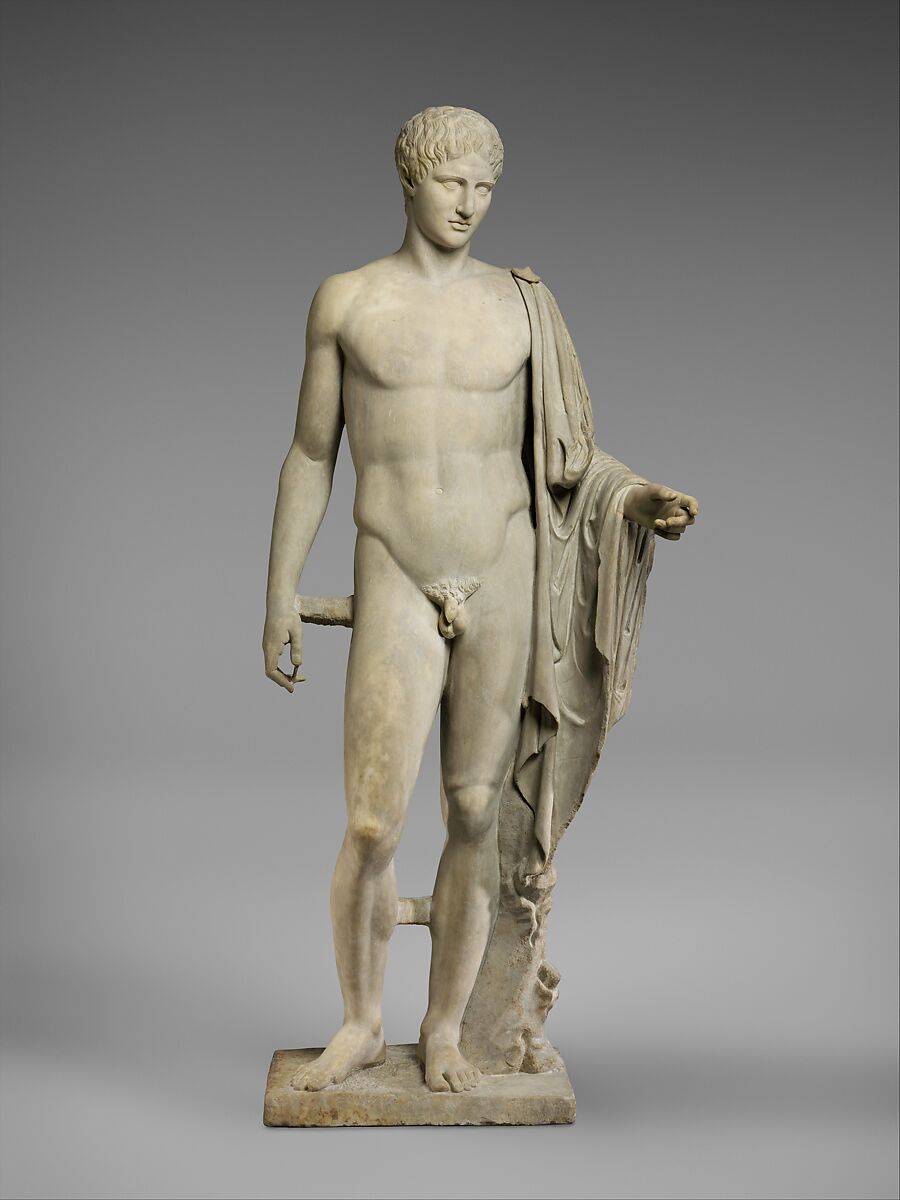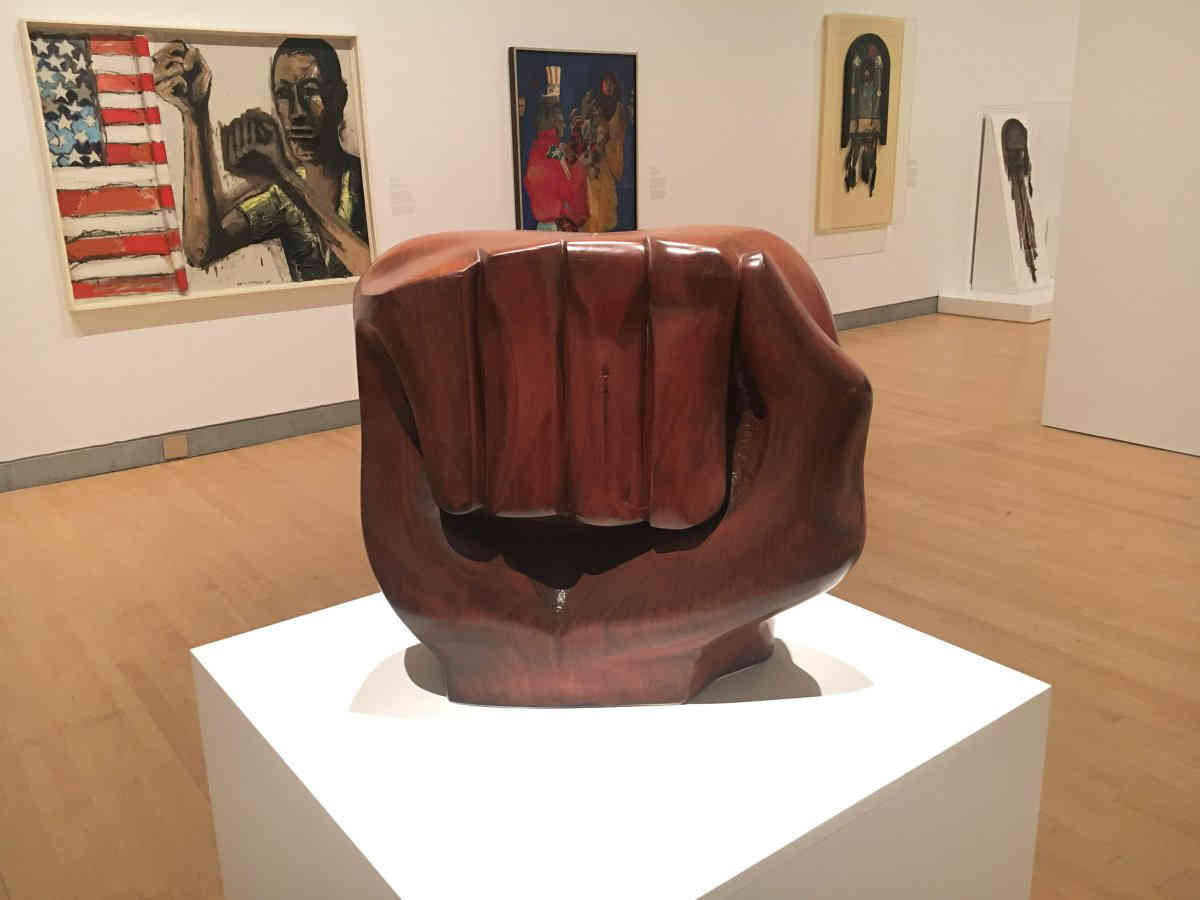Eric Zheng
Professor Shaw
ARTD 1010
12 December 2018
Gods and Humans in Art History
Throughout history, the interactions between humans and gods have been represented through sculptures and paintings by using symbolism and humanism to show how humans and gods have flourished. Gods and goddesses have always been a part of the human society, in order for humans, such as the Greeks and Romans, to express their beliefs and the way they worshiped their gods was through the form of art. Greek and Romans made these artworks so that they can honor the gods as a reminder for future generations that there is someone that will lead them, but without humans, gods cannot influence these civilizations. Humans and gods have had several interactions in Greek mythology, it all begins with the King of all gods, Zeus. He is the one that is the creator of the conflicts among humans and gods, because he decides whether or not the humans have to work hard to survive, while the gods can live at ease and care free.
Artist: Unknown/ Gift of the Hearst Foundation, 1956 (56.234.15)
Title: Marble statue of Hermes
Date: Roman, Imperial period, 1st or 2nd century A.D
Museum: The Metropolitan Museum of Art

This art piece located in the Metropolitan Museum of Art in New York City is known as the Marble Statue of Hermes. Hermes was the god of trade and was also known as the messenger of the gods, he was often interacting with humans such as travelers, herdsman, merchants, and etc. He is depicted in this statue naked with a robe on his arm showing his masculinity. Hermes was said to be quick and cunning and he was able to move freely between the mortals and the divine, such as the Underworld, with out consequences. He would protect the mortals and ancient myths say that he was a trickster by outwitting the gods for his own amusements or to help humankind. He was also known for his love affairs with many goddesses and mortals. Hermes was the son of Zeus and Maia and he had several siblings. Zeus also had many affairs with mortals, goddesses and other beings, he also had many children that were gods, demigods, or etc. Hermes takes after his father with his affairs and the way they intervene with mortals lives, like father like son.
Artist: Unknown/ Gift of Mrs. Fredrick F. Thompson, 1903 (03.12.13)
Title: Marble Statue of a youthful Hercules
Date: Roman, Flavian period, A.D. 68-98
Museum: The Metropolitan Museum of Art

This sculpture represents the hero known as Hercules, and it belongs in the Metropolitan Museum of Art along with the statue of Hermes. The structure’s name is the Marble statue of a youthful Hercules, it shows Hercules holding a club or a weapon in one hand and the skin of the Nemean lion in the other while he leans against what seems to be a tree which is used as a support for the structure. The Greek and Romans portrays their gods nude to show how muscular they where and they believed that the male nude is the highest form of beauty showing athleticism and exercise by representing not only athletes but heroes and gods as well. Hercules was also the son of the god Zeus like Hermes, however his mother was a mortal women named Alcmene. Zeus had many affairs with women which made his wife Hera furious because he had so many children that wasn’t hers. Hercules was known as a demigod, a being that is half god and half mortal, he was gifted with great strengths and stamina because he was a demigod. He grew up becoming a hero that fought in wars with the goddess Hera and he traveled to the Underworld. However, his life was not all care free compared to other gods. Hercules came across struggles as a human suffering like a man even though he had powers of a god.
Artist: Unknown/ Lent by Antikensammlung, Stacchiche Museen zu Berlin (AvP VII 24)
Title: Marble statue of Athena Parthenos
Date: Greek, Hellenistic period, ca. 170 B.C.; after the mid-5th century B.C.
Museum: The Metropolitan Museum

This statue is known as the Marble statue of Athena Parthenos also located in the Metropolitan Museum of Art. She is known for being the goddess of wisdom and war and several other important things. In this statue Athena is portrayed in clothing with a helmet, unlike the sculptures of Hermes and Hercules, she also has no arms or legs shown compared to the other two sculptures. Athena was represented as a companion to heroes or a patron goddess of heroic endeavor protecting civilizations and cities. She was the protector of Athens and fought in the Trojan War against Paris. Athena was said to have gone to war with humans and mythical beings as ally and as foe such as helping Hermes on a quest to kill Medusa or Hercules on driving away Stymphalian birds. Zeus was also Athena’s father however she did not have a mother like Hermes and Hercules, she was said to be born from Zeus’ head after he experiences a headache and she emerged from his forehead fully grown and clothed in armor.
In Greek mythology, gods and humans have had many interactions that have been represented in art history. These art works of gods created by humans are their way of showing the symbolism and meaning of the gods and humans relationship. The Marble statue of Hermes was created by humans to express their beliefs and the way they worshiped their gods for others to see such as future generations or other civilizations. Hermes was a messenger god often crossing paths with humans and helping them or guiding them to their destinations safely. The Marble statue of a youthful Hercules was created by the mortals so they could show the beauty of the male physique and how much they took pride in athleticism. Hercules was a demigod meaning he was half human so he suffered consequences and struggled like a human and was known to be a hero among the mortal world. The Marble statue of Athena Parthenos was made so humans could portray a goddess that could either protect or destroy mortals as to not infuriate her. Athena was the goddess of war, so she often interacted with humans in conflict or as a guardian. Humans and Gods share a relationship that goes way back to the B.C. and A.D. eras, these works of art depict that bond and what the gods meant to the mortals, humans whether it be their worship or conflict.
Works Cited
“The Interaction Between the Gods and Mankind.” UNIV 200, rampages.us/okayyoo/2016/10/19/the-interaction-between-the-gods-and-mankind/.
“Hermes • Facts and Information on Greek God Hermes.” Greek Gods & Goddesses, greekgodsandgoddesses.net/gods/hermes/.
“The Enduring Art of Marble Sculpture.” Khan Academy, Khan Academy, www.khanacademy.org/partner-content/getty-museum/getty-sculpture/a/the-enduring-art-of-marble-sculpture.
“Athena • Facts and Information on Greek Goddess Athena.” Greek Gods & Goddesses, greekgodsandgoddesses.net/goddesses/athena/.
“The Greeks Interaction with the Gods.” An Introduction to Greek Mythology, anintroductiontogreekmythology.weebly.com/the-greeks-interaction-with-the-gods.html.
https://www.metmuseum.org/art/collection/search/254925
https://www.metmuseum.org/art/collection/search/247000
https://www.metmuseum.org/art/collection/search/259354


















